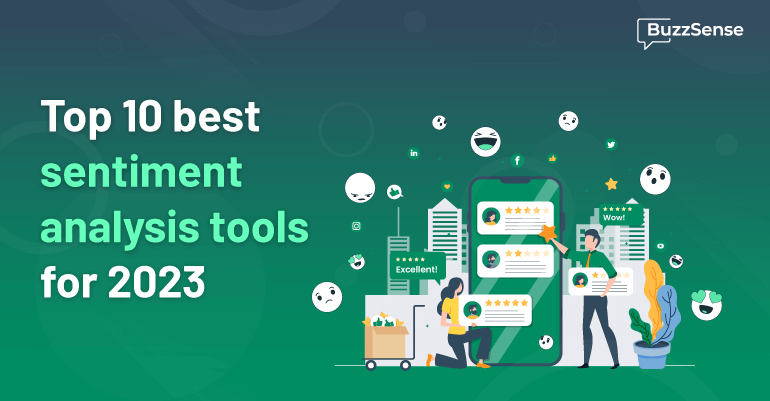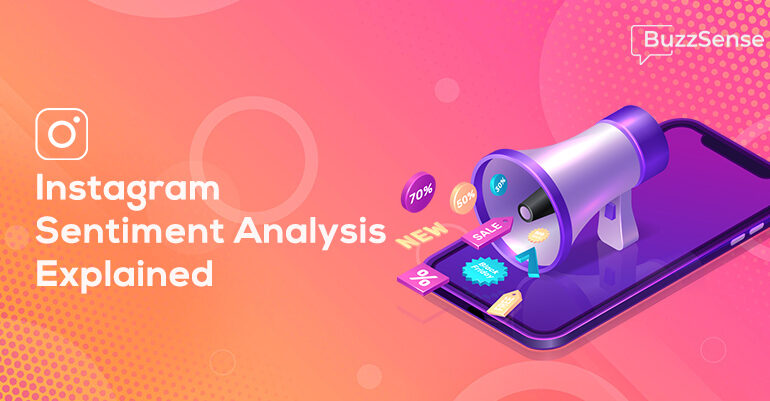Measuring customer sentiment on Instagram is at the heart of branding. To determine what your customers feel about your products and services or the brand itself, you try to measure vanity metrics like reactions, comments, and shares. Making an informed decision, however, requires tracking more information.
Suppose you feel overwhelmed by sitting on so much customer data. In that case, an AI-powered sentiment analysis tool can help you quickly aggregate data from your Instagram business account. It is the most efficient way to monitor customer sentiments for business owners and marketers looking to translate social engagement to higher ROI.
Here, we’ll help with everything you need to know about measuring customer sentiment and how to gain actionable insights for more effective Instagram social monitoring.
What is customer sentiment on social media?
The sentiment is the emotion and feeling behind customers’ experience with your brand. Sentiment analysis highlights customer opinions, discussions, and mentions around your business.
Today’s customers express their reviews and feedback online through reviews sites and social media to inform the brand what they think and need from them. All these voices and feelings add to your overall brand sentiment on Instagram. For any data-driven business, it is crucial to understand its strengths and emphasize improvements.
Why measure your audience sentiment?
Customer sentiment is an impactful metric for monitoring your brand health. There are five significant reasons why brand measure audience sentiment,
- Improve customer satisfaction
- Gain real-time insights into the audience
- Build loyalty
- Improve engagement intent
- Determine the lasting influence of your campaigns
Customer sentiments constantly shift, and word clouds are an excellent way to derive the context. Imagine you see a spike of positive brand mentions on stories, reels, and feeds, and you are happy to determine your campaign’s success. A few days later, you see an increase in negative brand mentions around the campaign. You need to dig deeper into the data to identify what went wrong and devise a plan to overcome it.

Analyzing the brand mentions in the key intervals allows you to establish a baseline of when to take action. It helps you capture relevant customer sentiments toward your brand and products. You need timely intervention to earn a good impression from them. Or the customer may feel neglected and move on to a competitor’s product/service.
Social media monitoring helps you visualize perceived sentiments and creates a solid two-way relationship with your followers. With more and more customers being social, they expect the brands to be transparent and educate them to make better-informed decisions. So, closely monitor your socials to know how your brand is perceived over time.
Metrics to measure customer sentiments on Instagram
Here are vital metrics to track and measure customer sentiment on social media platforms.
1. Comment velocity
When comments start piling up faster, something has triggered your audience. Looking out on the comment velocity can help to determine what has changed in your customer sentiments. To gain insight, you need to consider the following factors.
2. Comments tone
Scrolling through the comment section, you can quickly tell whether the comments under a post are positive, neutral, or negative. You can get a hint if something has gone down the track. However, you assign values to your sentiment analysis tool to help them pick out specific keywords that sync your brand to predict the trends and patterns in customer sentiment at a glance.
3. Reaction tone
Instagram offers a simple heart for the users to express their likelihood. The volume of likes is a primary indicator of social media engagement. When studying comments and stories with more reactions and emotions, things can get to a new level as it’s nuanced.
A high number of likes indicates positive feelings. Reactions are different across demographics, and sometimes the interpretation can also differ. Some can show negative emotions to result in positive causes or to support injustice. Compare the reactions with the comments’ tone to determine the sentiment.
4. Shares and mentions
Shares and mentions indicate that your content is engaging to your followers. However, you must consider the context of your content and followers’ interactions, which includes the tone, and frequency, together with the volume of shares and mentions, and compare it with your brand’s average to drive conclusions.
5. Brand-specific shares
Brand-specific shares are an excellent way to determine how your followers trust your knowledge and the quality of your content. If your branded content barely gets any shares, switch your Instagram content to a more relevant topic approach that adds value to the audience for better results.
Conclusion
Sentiment analysis is an incredible technology to analyze brand conversations and discussions around your products. Religiously tracking and measuring customer sentiment can make your brand look more approachable and keeps customer relations fresh. Leading brands and business leaders invest in a sentiment analysis tool to build digital sustainability and gain the sweet spot in the audience’s minds.
BuzzSense is an easy-to-use brand reputation management software that lets you capture and analyze data with a fine mix of social monitoring and sentiment analysis. With BuzzSense, you can manage all reviews and customer interactions in real time.
You can access all reviews from Google, Facebook, Instagram, and Twitter, and user rating platforms in one place. BuzzSense can help you save time with response automation, visualize actionable insights and create a timely positive impression.
Over time, you can track the trends, build ideal customer experiences and collect positive reviews and feedback that will eventually blow up your sales. Reach out to us for a BuzzSense demo, and we’ll help you access the power of customer sentiment and fast-track your data-driven branding success.




